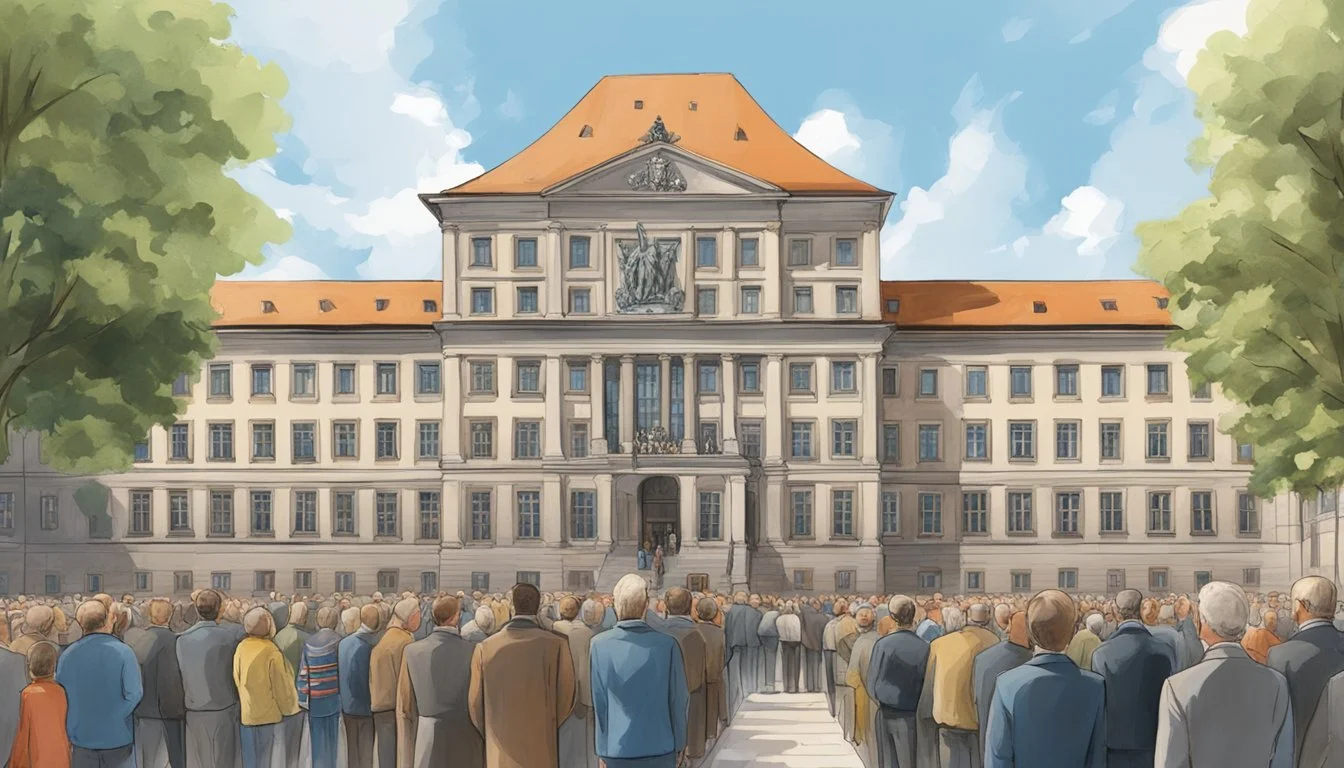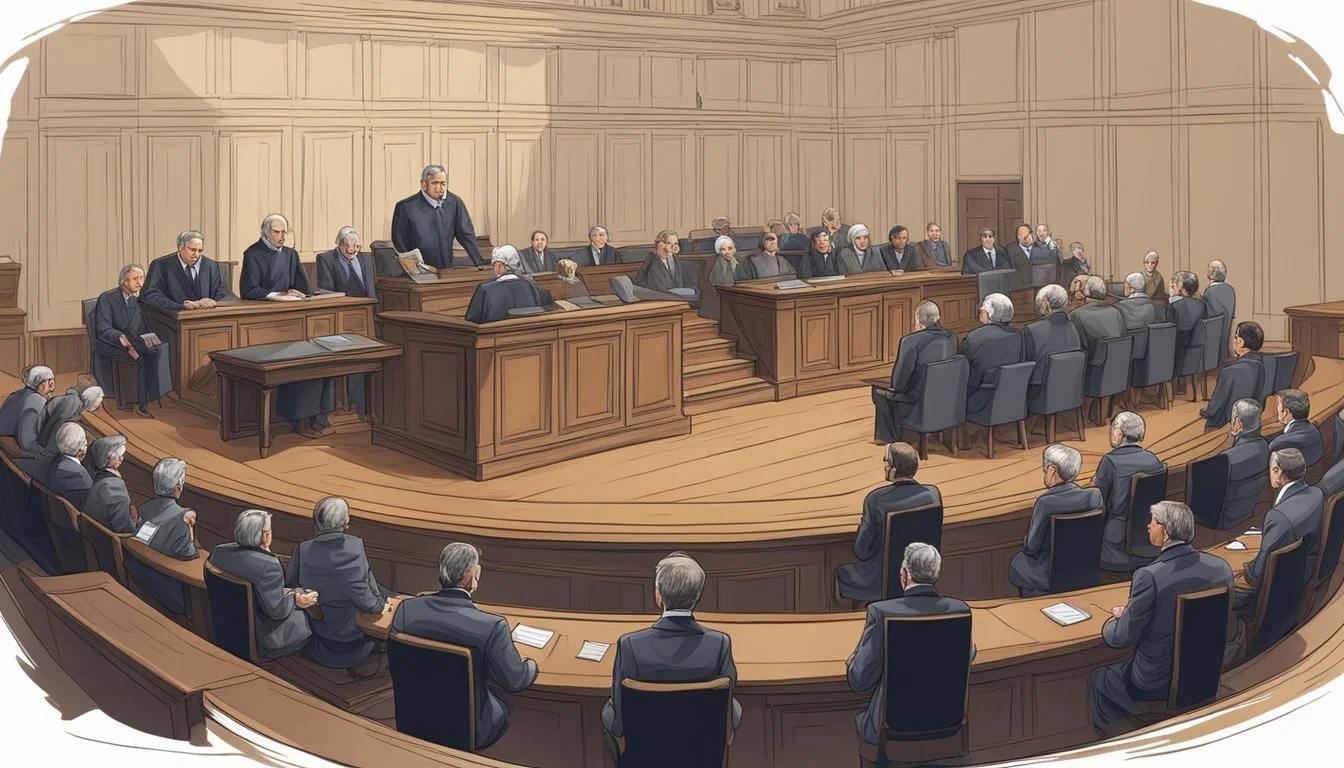Justice After Genocide: The Actual 'Judgment at Nuremberg'
Exploring the Historic War Crimes Trials
The Nuremberg Trials marked a watershed moment in international justice following World War II. Convened in 1945, these proceedings sought to hold high-ranking Nazi officials accountable for war crimes and crimes against humanity. The International Military Tribunal at Nuremberg established legal precedents for prosecuting state-sanctioned atrocities and genocide on a global scale.
"Judgment at Nuremberg" refers not only to the 1961 film, but more importantly to the actual verdicts delivered against Nazi leaders. These trials grappled with profound questions of individual and collective responsibility in the face of systematic evil. They introduced new legal concepts like "crimes against humanity" that continue to shape international law today.
The legacy of Nuremberg extends far beyond its immediate verdicts. It laid the groundwork for subsequent tribunals addressing genocide and war crimes in places like Rwanda and Yugoslavia. The trials serve as a powerful reminder that justice can be pursued even in the aftermath of history's darkest chapters.
Historical Context of Nuremberg Trials
The Nuremberg Trials emerged as a response to the unprecedented atrocities committed during World War II. These trials marked a pivotal moment in international law and justice, addressing the crimes of Nazi Germany and its leaders.
Origins of International Military Tribunal
The International Military Tribunal (IMT) was established through the London Agreement of August 8, 1945. The United States, United Kingdom, Soviet Union, and France jointly created this unprecedented legal framework.
The IMT aimed to prosecute high-ranking Nazi officials for crimes against peace, war crimes, and crimes against humanity. This novel approach sought to hold individuals accountable for state-sponsored crimes.
Nuremberg, a city with symbolic significance to the Nazi Party, was chosen as the trial location. The Palace of Justice, largely undamaged by Allied bombing, served as the courtroom.
Nazi Party and Its Crimes
The Nazi Party, led by Adolf Hitler, rose to power in Germany in 1933. They quickly established a totalitarian regime known as the Third Reich.
Nazi ideology promoted racial supremacy and antisemitism. This led to systematic persecution and genocide, most notably the Holocaust, which claimed the lives of six million Jews.
Other targeted groups included:
Roma and Sinti
Slavic peoples
Homosexuals
People with disabilities
Political opponents
The regime's aggressive expansion policies ultimately sparked World War II in Europe. Nazi Germany's actions resulted in millions of civilian deaths and widespread destruction across the continent.
World War II and The Allied Powers
World War II began on September 1, 1939, with Germany's invasion of Poland. The conflict quickly engulfed Europe and spread globally.
The Allied Powers, primarily consisting of:
United States
United Kingdom
Soviet Union
France
These nations united against the Axis powers led by Nazi Germany, Fascist Italy, and Imperial Japan.
As the war progressed, evidence of Nazi atrocities emerged. The Allies agreed that post-war justice would be necessary to address these crimes.
The war in Europe ended on May 7, 1945, with Germany's unconditional surrender. This paved the way for the Allied powers to implement their plans for trying Major War Criminals and bringing the Nazi leadership to justice.
Legal Framework and Charges
The Nuremberg trials established groundbreaking legal principles for prosecuting war crimes and crimes against humanity. The Charter of the International Military Tribunal defined the charges and procedures for trying Nazi leaders.
Nuremberg Principles and Charter
The Nuremberg Charter outlined four main charges: crimes against peace, war crimes, crimes against humanity, and conspiracy to commit these acts. It established individual criminal responsibility for international crimes, even for heads of state. The Charter rejected "following orders" as a defense and declared that complicity in crimes was punishable.
Key principles included:
Criminal liability for leaders who plan or instigate crimes
No immunity for heads of state
"Following orders" not a defense for war crimes
Complicity in crimes is punishable
Crimes Against Humanity and Peace
Crimes against humanity covered systematic atrocities against civilian populations. This new legal concept addressed Nazi persecution and genocide. Crimes against peace referred to planning and waging wars of aggression, a charge aimed at Nazi leaders who orchestrated the war.
Crimes against humanity included:
Murder
Extermination
Enslavement
Deportation
Persecution on political, racial or religious grounds
War Crimes and Conspiracy
War crimes charges addressed violations of the laws of war, including mistreatment of prisoners and civilian populations in occupied territories. The conspiracy charge allowed prosecution of Nazi leaders for jointly planning aggressive war and atrocities.
Common war crimes charges:
Ill-treatment of prisoners of war
Plunder of public or private property
Wanton destruction of cities and villages
Murder or deportation of civilian populations
The conspiracy charge linked defendants to the overall criminal enterprise of the Nazi regime.
Procedural Aspects of the Trials
The Nuremberg trials established important precedents for fair and transparent judicial proceedings in international criminal law. These trials balanced the need for justice with respect for defendants' rights.
Fair Trial and Due Process Rights
Defendants at Nuremberg were granted key fair trial protections. They received detailed indictments outlining charges against them. The trials were conducted in public, with proceedings translated into German.
Accused individuals had the right to present evidence and cross-examine witnesses. They could also testify in their own defense if desired. The tribunal required proof of guilt beyond a reasonable doubt for conviction.
Time was provided to prepare defenses. Defendants could appeal verdicts and sentences to a review board.
Legal Counsel and Representation
Each defendant was entitled to legal representation of their choice. Those unable to afford lawyers received court-appointed counsel. Defense teams included both German and Allied attorneys.
Lawyers had access to prosecution evidence and could call witnesses. They were permitted to challenge the tribunal's jurisdiction and admissibility of evidence.
Defense counsel faced challenges in accessing records and witnesses from occupied Germany. However, efforts were made to ensure adequate time and resources for case preparation.
Evidence and Witness Testimonies
The prosecution relied heavily on Nazi documents as evidence. This included government records, military orders, and correspondence seized by Allied forces.
Eyewitness accounts from survivors and former Nazi officials supplemented documentary evidence. Some defendants, like Hermann Göring, also chose to testify.
Rules of evidence were more relaxed than in typical criminal trials. Hearsay was sometimes admitted if deemed to have probative value. The tribunal aimed to establish a full historical record of Nazi crimes.
Cross-examination allowed the defense to challenge witness credibility and contest documentary authenticity. This helped ensure a more balanced presentation of evidence.
Key Figures in the Nuremberg Trials
The Nuremberg Trials involved prominent leaders from both the prosecution and defense, as well as notable defendants from Nazi Germany. Justice Robert H. Jackson played a pivotal role in shaping the proceedings and their lasting impact on international law.
Prosecution and Defense Leadership
Chief U.S. Prosecutor Justice Robert H. Jackson led the Allied prosecution team. He worked alongside British Attorney General Sir Hartley Shawcross, French Deputy Chief Prosecutor Auguste Champetier de Ribes, and Soviet Chief Prosecutor Roman Rudenko.
The defense was led by German lawyers, including Otto Kranzbühler for Grand Admiral Karl Dönitz and Hans Laternser for the General Staff and High Command. These attorneys faced the challenging task of defending high-ranking Nazi officials against war crimes charges.
Notable Defendants and Organizations
Key defendants included:
Hermann Göring, Hitler's designated successor
Rudolf Hess, Deputy Führer
Joachim von Ribbentrop, Foreign Minister
Albert Speer, Minister of Armaments
The trials also targeted Nazi organizations:
SS (Schutzstaffel)
SA (Sturmabteilung)
SD (Sicherheitsdienst)
Gestapo (Secret State Police)
These groups were charged with crimes against peace, war crimes, and crimes against humanity.
Justice Robert H. Jackson's Role
Justice Jackson delivered a powerful opening statement, setting the tone for the trials. He emphasized the importance of holding individuals accountable for their actions, stating that crimes are committed by men, not abstract entities.
Jackson's contributions extended beyond prosecution. He played a crucial role in:
Drafting the London Charter, which established the tribunal
Shaping the legal framework for trying war crimes
Advocating for fair trials and due process for defendants
His work laid the foundation for future international criminal tribunals and helped establish principles of international law that persist today.
Trial Outcomes and Legacies
The Nuremberg Trials resulted in significant legal precedents and shaped international criminal justice. Key outcomes included sentencing of Nazi leaders, establishment of new legal principles, and lasting impacts on global jurisprudence.
Sentencing and Executions
Of the 22 defendants tried at the International Military Tribunal, 19 were found guilty. The court handed down 12 death sentences, 3 life imprisonments, and 4 long-term prison sentences. Two defendants were not prosecuted due to illness or death.
On October 16, 1946, 10 of the condemned were executed by hanging. Hermann Göring committed suicide the night before his scheduled execution. Martin Bormann was tried and sentenced to death in absentia.
The executions were carried out at Nuremberg Prison by U.S. Army personnel. The bodies were cremated and the ashes scattered in the Isar River to prevent the creation of Nazi shrines.
Post-Trial Developments
The Nuremberg Trials set important legal precedents but faced challenges in implementation. Some convicted Nazi officials received early releases or had sentences reduced in the 1950s.
The trials sparked debates on victor's justice and ex post facto law. Critics argued the proceedings lacked impartiality, while supporters emphasized their role in establishing accountability for war crimes.
Germany initially resisted the trials' legitimacy but later acknowledged their importance. The country incorporated Nuremberg principles into its legal system and education curricula.
Documentation from the trials provided crucial historical records of Nazi atrocities and helped shape Holocaust remembrance efforts.
Influence on International Criminal Justice
The Nuremberg Trials profoundly influenced the development of international criminal law. They established the principle of individual criminal responsibility for war crimes and crimes against humanity.
Key legal concepts emerged:
Crimes against peace
War crimes
Crimes against humanity
These principles formed the basis for:
Universal Declaration of Human Rights (1948)
Genocide Convention (1948)
Geneva Conventions (1949)
The trials paved the way for later international tribunals, including those for Yugoslavia and Rwanda. They directly influenced the creation of the International Criminal Court in 2002.
Nuremberg's legacy continues to shape global efforts to prosecute genocide, war crimes, and crimes against humanity.
Continued Relevance and Contemporary Reflections
The Nuremberg trials established crucial precedents in international law and human rights. Their impact continues to shape global justice efforts and responses to mass atrocities today.
Universal Impact on Human Rights
The Nuremberg principles codified fundamental human rights protections. They established that individuals could be held accountable for war crimes and crimes against humanity. This shifted international law to recognize individual criminal responsibility.
The trials influenced the 1948 Universal Declaration of Human Rights. They helped define and prohibit genocide as an international crime. Many countries have since incorporated Nuremberg-derived concepts into domestic laws.
The precedents set at Nuremberg led to the creation of international criminal tribunals. Examples include courts for Rwanda, Yugoslavia, and the International Criminal Court.
Genocide and Modern War Crimes
Nuremberg's legacy is evident in responses to more recent atrocities. The Rwanda tribunal was the first international court to convict perpetrators of genocide. It built on Nuremberg by recognizing rape as an act of genocide.
The Yugoslav tribunal expanded jurisprudence on war crimes and crimes against humanity. It addressed sexual violence, ethnic cleansing, and command responsibility.
The International Criminal Court now serves as a permanent forum to prosecute genocide, war crimes, and crimes against humanity. Its Rome Statute drew heavily from Nuremberg principles.
Lessons for Future Generations
Nuremberg highlighted the importance of thorough documentation of atrocities. This informs modern human rights monitoring and fact-finding missions.
The trials demonstrated the need for fair judicial processes, even for the worst crimes. This principle underpins contemporary war crimes tribunals.
Nuremberg's example shows the value of pursuing justice, however delayed. Recent prosecutions of aging Nazi war criminals reinforce this message.
The trials serve as a warning about the dangers of unchecked state power and racist ideologies. They underscore the ongoing need for robust international human rights protections.


